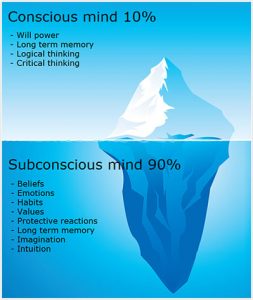The word ‘hypnosis’ paints a picture in one’s mind, of a dim lit room, decorated with optically illusive wall hangings and with a doctor holding a swinging crystal, counting backwards and with a snap of the fingers the patient goes deep down the subconscious path. Isn’t it? Well that is how hypnosis is shown in the films or virtual shows.
Is hypnosis real or just a work of fiction? Well, it is as real as you.
Let us explore the secret world of hypnosis.
What is Hypnosis?
Contrary to the popular belief, hypnosis does not involve a state of deep sleep. It is a trance-like state with an enhanced state of awareness, heightened concentration and extreme suggestibility. It is a induced condition, when the subconscious thoughts are revealed and the conscious thoughts are suppressed. So during hypnosis, one is not in the semi-sleep state but he/she is actually hyper-attentive.
History
Franz Mesmer is known as the Father of modern hypnotism. He called it ‘animal magnetism’ thought it to be some magical force that flowed from the hypnotist to the subject. Hypnosis was originally known as ‘Mesmerism’. The derivative ‘Mesmerize’ is still used in the English language.
James Braid gave the term ‘Hypnotism’, which is derived from the Greek word ‘hypnos’ which means ‘to sleep’. Braid along with other scientists proved Mesmer’s theory of animal magnetism wrong and theorized that it is a combination of psychologically mediated responses to suggestions.
Hypnosis and brain
Our mind has two very different parts -:
Our brain can be compared to an iceberg. The top part is analogous to the conscious mind while the part of the iceberg below the water is analogous to the subconscious mind.
(i) The conscious mind (10%) –
This part is the critical faculty, which makes us aware of the present moment. We spend most of the time in this part. It performs the function of temporary memory, which is analytical approach and problem solutions, rational thinking – that makes sense or provides us reasons for the things that we do. The conscious mind speaks the language of logic.
(ii) The subconscious Mind (90%) –
This is the unsung hero of our mind. This is the part that comprises of habits, emotions etc. It controls all of the autonomic processes like breathing, heart rate, blood pressure, temperature regulation, immune system, growth etc. The subconscious mind is the part of our permanent memory. Imagination is the language of the subconscious mind.
The conscious mind is in the forefront, while the subconscious works in the background. And in between the two there is the ‘Critical Faculty’ – the one that acts as a sieve to filter things that are not required.
 Hypnosis
Hypnosis
is the state when the conscious mind is put on the back burner and the subconscious mind is accessed. It is the bypassing of the critical faculty while the subconscious mind is let loose. Since the logical part is no more into play, a person enters into a trance-like relaxed and a highly suggestible state. An EEG of the brain shows that during this, fast-wave brain activity, which correlates to thinking and processing, decreases, while slow-wave activity exhibited during both relaxation and focus increases.
Hypnosis is usually induced by a procedure known as a hypnotic induction involving a series of preliminary instructions and suggestion. The hypnotist uses different methods to do this. He may use a pendulum, a swinging crystal, counting backwards or modulated voice etc. All this is to induce a state of suggestibility by making the person concentrate on one thing only. This is the time when the subconscious mind is accessed and instead of a sleep like state, you are in a state of heightened concentration. Since the imaginative mind is into play, therefore the hypnotist can suggest things that the mind imagines to be true. The door to the permanent memory is unlocked. Thus the hypnotist can ask the person to access the memories which our conscious mind filters and concentrate intensely on a specific thought or memory, while blocking out sources of distraction. This is how regression therapy works. So hypnosis is nothing but tapping the power of the subconscious mind.
Well if you think that only a hypnosis session can send you into the trance state, then think again. We can experience hypnosis in our everyday life too. Day dreaming is a milder version of hypnosis. Remember getting too engrossed in a movie, when you almost cried while seeing your favorite character die? That is the time when your logical part is subdued and your emotional subconscious mind imagines it to be true.
So the next time you watch a movie, make sure you are not hypnotized by it.
